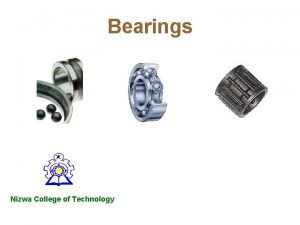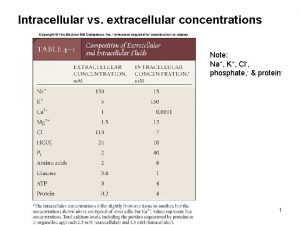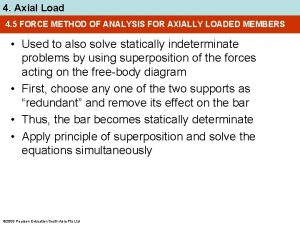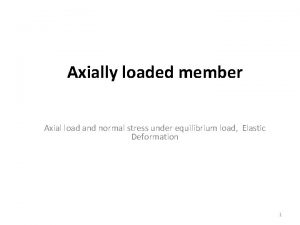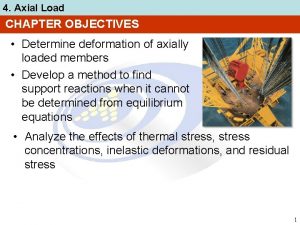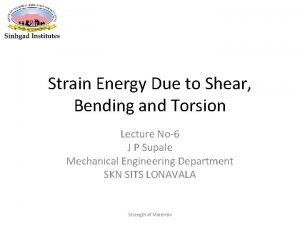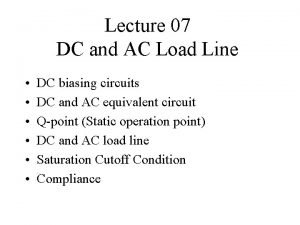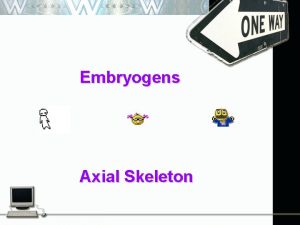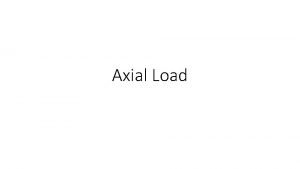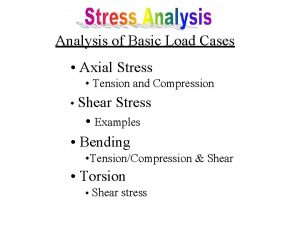4 Axial Load 4 7 STRESS CONCENTRATIONS Force







- Slides: 7

4. Axial Load 4. 7 STRESS CONCENTRATIONS • Force equilibrium requires magnitude of resultant force developed by the stress distribution to be equal to P. In other words, P = ∫A σ d. A • This integral represents graphically the volume under each of the stress-distribution diagrams shown. 2005 Pearson Education South Asia Pte Ltd 1

4. Axial Load 4. 7 STRESS CONCENTRATIONS • In engineering practice, actual stress distribution not needed, only maximum stress at these sections must be known. Member is designed to resist this stress when axial load P is applied. • K is defined as a ratio of the maximum stress to the average stress acting at the smallest cross section: Equation 4 -7 2005 Pearson Education South Asia Pte Ltd σmax K= σ avg 2

4. Axial Load 4. 7 STRESS CONCENTRATIONS • K is independent of the bar’s geometry and the type of discontinuity, only on the bar’s geometry and the type of discontinuity. • As size r of the discontinuity is decreased, stress concentration is increased. • It is important to use stress-concentration factors in design when using brittle materials, but not necessary for ductile materials • Stress concentrations also cause failure structural members or mechanical elements subjected to fatigue loadings 2005 Pearson Education South Asia Pte Ltd 3

4. Axial Load EXAMPLE 4. 13 Steel bar shown below has allowable stress, σallow = 115 MPa. Determine largest axial force P that the bar can carry. 2005 Pearson Education South Asia Pte Ltd 4

4. Axial Load EXAMPLE 4. 13 (SOLN) Because there is a shoulder fillet, stressconcentrating factor determined using the graph below 2005 Pearson Education South Asia Pte Ltd 5

4. Axial Load EXAMPLE 4. 13 (SOLN) Calculating the necessary geometric parameters yields r 10 mm = 0. 50 = n 20 mm w 40 mm =2 = h 20 mm Thus, from the graph, K = 1. 4 Average normal stress at smallest x-section, P = 0. 005 P N/mm 2 σavg = (20 mm)(10 mm) 2005 Pearson Education South Asia Pte Ltd 6

4. Axial Load EXAMPLE 4. 13 (SOLN) Applying Eqn 4 -7 with σallow = σmax yields σallow = K σmax 115 N/mm 2 = 1. 4(0. 005 P) P = 16. 43(103) N = 16. 43 k. N 2005 Pearson Education South Asia Pte Ltd 7
